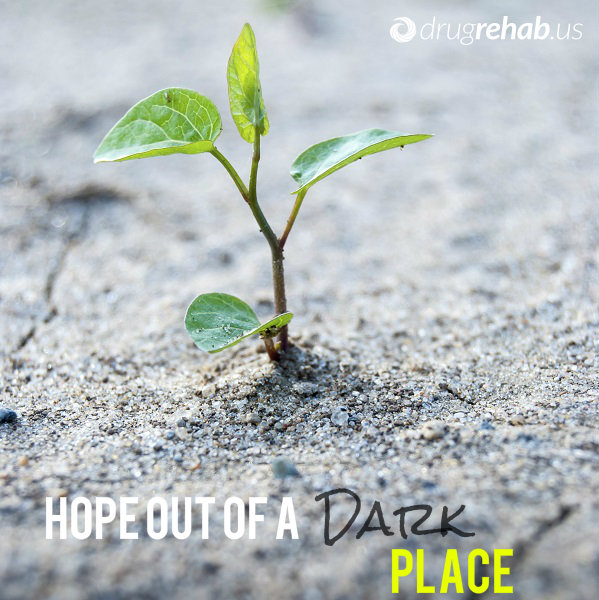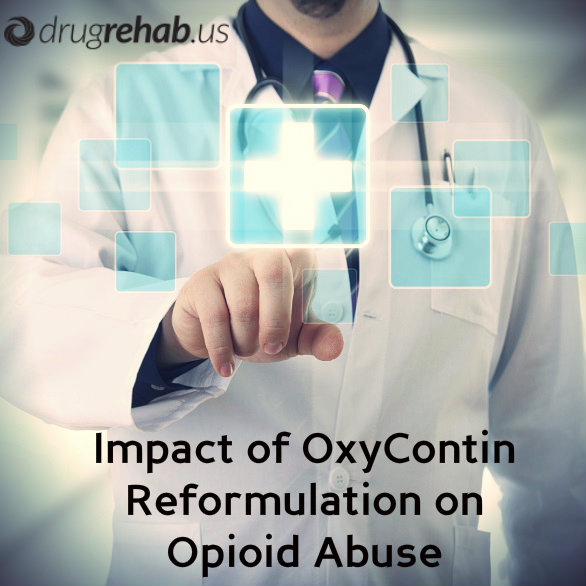07 May 2015
The Truth About Methadone
Methadone maintenance is a treatment strategy for heroin addiction that has been helping people for decades. Methadone, like heroin, is an opioid drug. As such, it can help addicts maintain sobriety from heroin without experiencing the devastating withdrawal symptoms that lead so many back to the drug. Many people misunderstand methadone and believe that it is just another form of drug addiction.
Learn the truth about this effective harm reduction strategy with these methadone myths and facts.
Methadone Myths And Truths
 Myth: Methadone is just a substitute for heroin. Although it is also an opioid, methadone is not a substitute drug. It is a valid medical treatment for heroin addiction. What happens in detox from drugs, particularly from heroin, is withdrawal so terrible that few people can experience it without going back to using. For a drug as serious as heroin, withdrawal and cravings last for a long time. Methadone helps mitigate those symptoms so that addicts can resist the urge to go back to heroin.
Myth: Methadone is just a substitute for heroin. Although it is also an opioid, methadone is not a substitute drug. It is a valid medical treatment for heroin addiction. What happens in detox from drugs, particularly from heroin, is withdrawal so terrible that few people can experience it without going back to using. For a drug as serious as heroin, withdrawal and cravings last for a long time. Methadone helps mitigate those symptoms so that addicts can resist the urge to go back to heroin.
Myth: People using methadone are methadone addicts. Methadone maintenance is a medical treatment, and anyone going through this treatment is doing so under the direction of a doctor. Using methadone in this way does not simply mean that a person’s addiction is transferred from heroin to methadone. While it is accurate to say that a person in treatment is physically dependent on methadone, he is not addicted. He is not experiencing negative consequences from the fact that his body needs the methadone. This is the line between dependence and addiction and between methadone maintenance and heroin addiction.
Myth: Methadone makes you gain weight and rots your bones and teeth. Substance use and abuse cause a number of ill health effects, but the idea that methadone maintenance is bad for your health is not completely true. Methadone can cause dry mouth, which can increase the risk for tooth decay. Proper dental care mitigates this risk. An incorrect dosage can cause bone pain, but it does not cause bone decay. Finally, weight gain can occur with methadone maintenance, but only because getting off heroin means a return to a normal appetite.
Myth: Methadone causes sterility. This is absolutely untrue. It can sometimes lower testosterone in men, but this does not cause a man to be sterile. It can also be diagnosed and easily treated when it does occur.
Myth: Methadone cures heroin addiction. It would be nice if this were true, but in reality there is no cure for any type of addiction. Methadone maintenance is a medical treatment for heroin addiction. Success rates for opiate addiction treatments vary based on the individual, but methadone maintenance works well for many addicts. With this kind of medical treatment as well as therapy and support, many people are able to stay sober.
Methadone often gets a bad rap as a drug used to treat a drug addiction, but the truth is that it has been used for decades because it really does help people addicted to heroin.
Check Out Our Other Informative Addiction Medication Blogs
Prescription drug abuse is responsible for over half of all drug overdose deaths in the U.S., and more people die from drug overdoses than gunshot wounds or motor vehicle accidents. The extent of the issue can’t be overstated, and this is why legislators, researchers and treatment providers are going to such lengths to tackle the growing problem.
In May 2014, the FDA approved a medication that can be used by anybody—even without medical training—to counteract opioid overdose, and other recently approved medications also offer promise for reducing the number of lives lost to prescription drug abuse. However, as with similar approaches, the psychological elements of addiction still need to be addressed in order to truly tackle the problems gripping the nation.
The Prescription Drug Abuse Epidemic
Prescription drug abuse is largely driven by the erroneous idea that prescription drugs are somehow “safe” because they’re prescribed by doctors. The problem is that many prescription drugs are addictive and only safe when used as suggested by physicians. As addiction develops, users are increasingly less likely to heed the suggested dosage advice, instead taking more and more of the substance to satisfy their growing cravings.
The majority of prescription drug abuse involves opioid medicines (substances with the same overall effects as heroin), but due to how widespread their abuse is, approximately five times as many people die from overdose on prescription opioids every year than from heroin overdose. Even combining heroin and cocaine overdose deaths doesn’t approach the number of deaths caused by prescription opioid overdose. Stopping these deaths is a huge priority for public health.
New Medications Offering Hope For Stopping Prescription Drug Overdoses
Evzio – The Opioid Overdose Reversal Shot
 Evzio is an approved opioid overdose treatment, offering a single dose of naloxone hydrochloride and coming in a hand-held, auto-injection format. Naloxone is an opioid antagonist, meaning that it counteracts the effects of opioid drugs and can be used to quickly reverse the effects of overdose.
Evzio is an approved opioid overdose treatment, offering a single dose of naloxone hydrochloride and coming in a hand-held, auto-injection format. Naloxone is an opioid antagonist, meaning that it counteracts the effects of opioid drugs and can be used to quickly reverse the effects of overdose.
The drug has been used in emergency treatment of overdose for some time, but the benefit of the new formulation of the medication is that it doesn’t require a trained physician or medical professional to administer, meaning that a single shot could be kept in homes for use in emergencies.
The approach isn’t perfect—after all, the true problem is what caused the individual to take a dangerously high dose in the first place—but there is no doubt that quicker access to corrective medications could reduce the numbers of deaths.
Naltrexone Implants – Reducing Cravings And Stopping Addiction?
Naltrexone is an opioid receptor antagonist, which means that it effectively “blocks” the parts of the brain opioid drugs use to create their effects and thereby reduces cravings. The medicine has been used for some time for both heroin and alcohol addiction, but by giving the drug in implant form, it could potentially be more effective for curbing addiction.
BioCorRx uses the medicine alongside counseling in its Start Fresh Program, and the implant (inserted into the lower abdomen) gradually releases doses for a period of six months. According to the treatment provider, the approach is so effective that 85 percent of patients who go through all 15 sessions within six months quit abusing dugs, and some report that cravings disappear within just a few hours of having the implant inserted.
However, it’s worth noting that clinical trials haven’t been conducted on the program, so the very high success rate is likely an overestimation.
The Importance Of Psychological Treatment For Addiction
The new approaches to reducing the deaths from prescription opioid abuse are definitely promising, but Evzio in particular misses an important element of treatment for addiction. Having the overdose-counteracting shot in the homes of those at risk is obviously beneficial and will reduce the amount of needless deaths, but the underlying problem is effectively unaddressed.
Without psychological treatment to get to the bottom of what causes the individual to abuse prescription medications in the first place, the same (internal or external) pressures will undoubtedly crop up again after a near-overdose event, and without the psychological tools to deal with these pressures in a healthy way, more drug abuse is likely to result. It’s good to reduce the amount of fatalities from prescription drug abuse, but if we’re to make a substantial dent in the numbers, it is the addiction that needs to be addressed, not just the physical risk.
The BioCorRx program is promising because it does provide psychological treatment in addition to medication to help control cravings, although there are undoubtedly exaggerations with regards to the program’s success rate. However, by providing 15 counseling sessions, the program is able to offer goal-focused support to addicts, and help them take decisive steps toward lasting sobriety.
Understanding The Roots Of Addiction To Successfully Overcome It
New medications for tackling prescription opioid abuse have their uses, and anything with the power to reduce the deaths from opiate abuse should be wholeheartedly supported, but it’s essential to remember that addiction isn’t solely a physical issue.
In addition to raising awareness of prescription drug abuse itself, people need to recognize that the true roots of addiction are psychological, and it can’t be fixed with a simple pill, injection or implant. Overcoming addiction takes dedication. There are no short cuts.
There Is Hope However, Out Of That Dark Place To A Place With Light!
Every recovering alcoholic or addict knows that each day of sobriety is a reprieve from active addiction. Active addiction is a chronic illness that may ultimately kill you. If you are an addict, you know that to drink or drug is to die.
Living life sober can be full of many challenges that can sometimes threaten sobriety. When faced with a diagnosis of terminal illness, the battle to stay clean and sober, no matter what, intensifies.
Personal Story Of John Eggers’ Terminal Illness Positively Redefining His Life
John Eggers, a 48-year-old attorney from Irvine, CA was diagnosed with glioblastoma, an aggressive form of brain cancer. There is no cure for his cancer, and the prognosis is poor. Without treatment, he would have approximately three months to live. With treatment, doctors predict his remaining life expectancy is 12 to 15 months. Experts say that less than 10 percent of glioblastoma patients survive five years after diagnosis.
 His symptoms came on suddenly one day after a trip to the gym. He lost feeling in his limbs and couldn’t speak. He suffered a seizure. A brain tumor was discovered, and he learned that he had a terminal form of cancer.
His symptoms came on suddenly one day after a trip to the gym. He lost feeling in his limbs and couldn’t speak. He suffered a seizure. A brain tumor was discovered, and he learned that he had a terminal form of cancer.
Eggers has been video blogging his final months of life for KTLA while he shares his experiences and checks things off his bucket list. Some of the items he has already been able to do include meeting Vice President Joe Biden, traveling to Europe and skydiving. He has also appeared on a TV show and met his favorite band, Depeche Mode. Living with terminal illness, Eggers is redefining his life.
Eggers admits that before his illness, he led a life driven by self-centeredness and not much regard for others. Faced with his own death, that has all changed. John has raised funds for families of others with cancer, and he has worked pro bono to help families of sick children stand up to insurance companies.
Trying To Escape Reality Through Opiate Addiction
Recently he was given opiates for pain but began abusing them to cope with depression and anxiety. Not many people would blame a dying man for wanting to escape from reality. But if you’re in recovery, you know that abusing drugs doesn’t make problems go away. It only postpones them or creates new ones.
In a recent video blog, he stated, “My name is John Eggers and I am a drug addict.” John decided to check into a treatment facility to beat his addiction, because he knew the drugs could kill him before the cancer did. As he pursues a life free of drugs, John hopes to be a powerful example to other addicts who are battling cancer.
And he wants to die drug-free.
Choosing Sobriety No Matter What
Eggers describes his addiction as “a very dark place,” a place beyond the comprehension of most people. He says the fact that his lifespan is short is acceptable to him, but that what isn’t acceptable is wasting any more of the time he has left on opiates or other drugs.
Newly out of treatment, Eggers continues to document his journey and his struggles. One side of his face is paralyzed since brain surgery, and at times he has difficulty choosing words as he speaks. But his desire to be clean and sober is unwavering.
The natural reaction for a drug addict or alcoholic when faced with extreme stress is to turn to chemicals, and there isn’t much greater stress than being faced with your own death. If you’re an addict, turning to mind-altering substances is not bad behavior. It’s doing what comes naturally. But it’s possible to recover from addiction to drugs, and John is making that choice today. Choosing recovery is making a conscious choice to go against the natural urge to use and abuse drugs and alcohol. No matter what.
In the case of John Eggers, he is choosing sobriety in spite of a death sentence, and he is using his final days to carry the message of a drug-free life. He hopes to inspire others through his video blog. If he can stay sober while he is facing a great deal of pain and his own mortality while he journeys through the dying process, others can stay sober too—no matter what they are facing.
YOU CAN DO THIS!
Most people recovering from an addiction to an opioid drug or medication will experience a relapse fairly early in the treatment process. Two key factors in the onset of a relapse are the presence of continuing cravings or urges for opioid use and the onset of withdrawal symptoms after initial opioid detoxification.
In a study slated for publication in February 2015 in the journal Addictive Behaviors, a team of American researchers looked at the ways in which cravings and withdrawal symptoms impact the relapse risks for any given person recovering from prescription opioid addiction.
Opioid Cravings
All people dealing with opioid drug or medication addiction have longstanding chemical changes in their brain function that make them physically dependent on the continued intake of some form of opioid substance.
 Opioid cravings are essentially unconscious and conscious signals sent by the brain as a reminder of the established need to maintain at least a minimum level of opioid intake. Conscious cravings may manifest as clearly articulated thoughts supporting immediate opioid consumption or opioid consumption in the near future.
Opioid cravings are essentially unconscious and conscious signals sent by the brain as a reminder of the established need to maintain at least a minimum level of opioid intake. Conscious cravings may manifest as clearly articulated thoughts supporting immediate opioid consumption or opioid consumption in the near future.
Conversely, unconscious cravings may manifest as unarticulated urges for opioid intake. Conscious and unconscious cravings for the use of opioids or any other substance commonly stem from exposure to drug cues.
These cues are reminders of the actions commonly undertaken during episodes of substance use, the thoughts or feelings associated with substance use or the circumstances in which substance use typically occurs.
A strong drug cue can support a rapid escalation of drug cravings, and thereby steeply boost the short-term odds of drug use. The presence of opioid cravings is a diagnosable symptom of opioid use disorder (opioid abuse/addiction).
Opioid Withdrawal
Withdrawal is a second reinforcer used by the dependent/addicted brain to ensure the continued consumption of any given substance. It occurs when the levels of that substance fall below the levels required by the currently established conditions of addiction.
Opioid Withdrawal Symptoms
Specific symptoms of opioid withdrawal include:
- sleeplessness
- achy muscles
- an unusually anxious or agitated mental state
- excessive sweat production
- nausea
- vomiting
- pupil dilation
- diarrhea
- cramping in the stomach or abdomen
Unlike some forms of withdrawal (e.g., alcohol withdrawal), opioid withdrawal has no potential to trigger fatal changes in body function. However, affected individuals commonly feel uncomfortable enough to resume opioid intake. Withdrawal symptoms are usually most prominent during initial opioid detoxification. Along with opioid cravings and a range of other symptoms, doctors use the presence of withdrawal symptoms to help diagnose the presence of opioid use disorder.
Impact On Opioid Relapse Rates statistics
In the study scheduled for publication in Addictive Behaviors, researchers from the University of Texas Medical School at Houston, the University of Texas Health Science Center, the University of Texas Southwestern Medical Center and Harvard-affiliated McLean Hospital used information from a project called the Prescription Opioid Addiction Treatment Study to help determine exactly how opioid cravings and opioid withdrawal work together to increase the odds that any given person in recovery will relapse back into uncontrolled opioid use.
A total of 653 people dependent on or addicted to opioid medications took part in the study. All of these people received a commonly used medication, called buprenorphine/naloxone, that’s specifically designed to reduce the risks for relapse in people affected by opioid addiction.
The researchers concluded that there were four distinct groups of people in the larger pool of study participants: people with high levels of opioid craving and opioid withdrawal, people with moderate or intermediate levels of opioid craving and opioid withdrawal, people who transitioned from high levels of craving and withdrawal to low levels of craving and withdrawal, and people who maintained low levels of craving and withdrawal.
The researchers also concluded that three groups of participants were least likely to relapse back into uncontrolled opioid use: people who experienced a reduction in their craving and withdrawal levels over time, people who initially experienced low levels of craving and withdrawal, and people who responded well to the craving- and withdrawal-reducing effects of buprenorphine/naloxone.
The study’s authors believe that their work increases the level of understanding about those individuals most likely to rapidly relapse after entering treatment for prescription opioid dependence/addiction. They also believe that their work underscores the importance of paying close attention to changing craving and withdrawal symptoms during the recovery process.
Finally, the authors believe their work may increase the future ability to identify individualized treatment patterns that decrease each affected person’s chances of experiencing an early opioid relapse.
No one would have ever expected anything but success out of Liam. He was born to a charmed, wealthy family and had been its shining jewel. An all-star athlete and honors student, he’d attended Stanford University School of Medicine, with every intention of becoming the neurosurgeon he vowed he’d become at only 17. But a skiing accident changed everything for Liam; he’d been accelerating down a black diamond when a less skilled skier collided with him, injuring his lumbar. The back pain and medical treatments, including two surgeries, entailed the use of opioid painkillers in order to get Liam through the day.
Without his steady hand and laser focus, or an ability to stand comfortably for hours on end, his dream of operating fell away. And without an ability to be active in the same ways he had been—Liam had been something of a fitness nut before his injuries—he grew depressed. Soon enough, he realized he’d developed a problem with his pain medication; he had become dependent.
When You Become Addicted To The Treatment
 Liam was still seeking a residency (he would be a neurologist rather than a neurosurgeon), and knew that an addiction could drastically complicate his hopes. He’d heard plenty about compromised doctors and nurses who’d been arrested while abusing hospital medications, or injuring patients while high. He didn’t want to become a shameful statistic. So he sought treatment through a private referral. He would take Suboxone, or buprenorphine, an opioid pain reliever also used for long-term treatment of opioid addiction.
Liam was still seeking a residency (he would be a neurologist rather than a neurosurgeon), and knew that an addiction could drastically complicate his hopes. He’d heard plenty about compromised doctors and nurses who’d been arrested while abusing hospital medications, or injuring patients while high. He didn’t want to become a shameful statistic. So he sought treatment through a private referral. He would take Suboxone, or buprenorphine, an opioid pain reliever also used for long-term treatment of opioid addiction.
In the beginning, the buprenorphine worked well, but Liam discovered that the benzodiazepine he’d been prescribed for anxiety relating to his crash and the stress it had caused, when combined with the Suboxone, created something of a high. His habit-seeking behaviors began again in earnest. The Suboxone was no longer serving him as treatment for dependence. He was addicted to the treatment itself.
Opioid Addicts In Need Of Treatment
Buprenorphine, sold as Suboxone or Subutex, was approved by the FDA in 2002 for the treatment of opioid addiction in the U.S. Buprenorphine is prescribed by limited approved doctors as a sublingual (under-the-tongue) treatment for moderate pain and for long-term treatment of opioid addiction to suppress the symptoms of withdrawal and to reduce cravings. While it does not cause euphoria in opioid-dependent patients (and blocks the effects of other opioids for at least 24 hours), it can create euphoria and subsequent dependence in individuals who are not previously dependent on opioids. And while it is considered safer than methadone treatment, individual users still find ways to achieve a high (with combination benzodiazepines in some instances), making them more likely to remain drug dependent and less likely to recover.
From a New York Times piece in November, 2013: “Suboxone is the blockbuster drug most people have never heard of. Surpassing well-known medications like Viagra and Adderall, it generated $1.55 billion in United States sales last year, its success fueled by an exploding opioid abuse epidemic and the embrace of federal officials who helped finance its development and promoted it as a safer, less stigmatized alternative to methadone.”
Questioning Safety With Suboxone
In the realm of addiction, there are (many) dragons. Buprenorphine may, in fact, be doing more good than harm, and until statistical evidence reveals otherwise, a story like Liam’s may be purely anecdotal. There are others like him, but their numbers may stack up only so high compared to the numbers of individuals who are being helped by treatments like Suboxone. Opioids, it appears, create one of the hardest addictions to quit, and those who suffer may need all the help they can get.
Still, it’s wise to bear in mind that crossover addiction—the exchange of one addiction for another—is nearly universal in the addiction community. If an addict drops one addiction, he picks up another. With maintenance treatments like methadone and buprenorphine, the crossover addiction may become a case of choosing between the lesser of evils—and surely Suboxone treatment is a lesser evil than previous painkiller addictions.
If You Are Struggling With Opioid Abuse Or Addiction, It’s Time To Step Up And Make The Call…It Could Change Your Life!
OxyContin is the brand name of an extended-release painkilling medication that contains the opioid narcotic substance called oxycodone. In its original form, this medication was easy to tamper with and use as a source of opioid abuse. In response to this situation, the manufacturers of OxyContin reformulated the medication and made it considerably more tamper-resistant.
In a study published in June 2014 in the journal Drug and Alcohol Dependence, a team of U.S. researchers investigated whether the reformulation of OxyContin has had the desired effect of reducing the number of people who use the medication in a pattern of opioid abuse.
Oxycodone And OxyContin
Oxycodone is a generic opioid medication noted for its usefulness in the relief of various forms of serious or severe pain. Like all other opioid drugs and medications, it can trigger diagnosable problems with abuse or addiction when used in ways not sanctioned and monitored by a doctor. Some branded medications contain oxycodone in combination with other, less-powerful painkilling substances such as acetaminophen, aspirin or ibuprofen.
 Common examples of these combined medications include Percocet, Endocet, Percodan, Combunox and Roxicet. Other branded medications contain only oxycodone as their active ingredient. In addition to OxyContin, examples of these medications include Oxecta and Roxicodone.
Common examples of these combined medications include Percocet, Endocet, Percodan, Combunox and Roxicet. Other branded medications contain only oxycodone as their active ingredient. In addition to OxyContin, examples of these medications include Oxecta and Roxicodone.
OxyContin arrived on the U.S. market in 1995. It is specifically designed to provide extended amounts of pain relief to people affected by ongoing moderate or severe pain. Since it must produce its effects for many hours, an OxyContin tablet contains more oxycodone than most other available medications.
Unfortunately, in its original form, the medication was highly susceptible to crushing, chewing, dissolving and other forms of manipulation that made its oxycodone content available all at once. This fact made OxyContin a prominent target for abuse by people seeking the recreational drug effects of opioid intake. Widespread availability of the medication also contributed to its prominent role in opioid abuse in the U.S.
OxyContin Medication Reformulation
Along with addiction specialists, public health officials and drug enforcement officials, the manufacturers of OxyContin (Purdue Pharma LP) became well aware of the role that abuse of the medication played in the larger phenomenon of prescription opioid abuse.
In response, they withdrew the original formulation of OxyContin from the market and, in August 2010, released a new version of the medication that is substantially harder to use as a source of abuse. Specific steps taken during this reformulation include minimizing the availability of oxycodone even after crushing or other manipulation occurs, as well as making it impossible to pass a dissolved form of the medication through a syringe for injection.
Impact Of OxyContin Reformulation On Opioid Abuse
In the study published in Drug and Alcohol Dependence, researchers from the University of Kentucky and Purdue Pharma used interviews with a group of 189 adults with a prior history of abusing OxyContin to assess the effectiveness of the new formulation of the medication in discouraging opioid abuse. During these interviews, each participant was asked to compare their monthly level of involvement in opioid abuse before the OxyContin reformulation to their monthly level of involvement after the reformulation.
After analyzing the results of the interviews, the researchers found that 33 percent of the participants had tried to abuse the reformulated version of OxyContin in the month before the study. This contrasted with a 74 percent rate of monthly OxyContin abuse prior to the reformulation, as well as with a 96 percent rate of monthly abuse for any form of immediate-release oxycodone.
Individual rates for snorting and injecting the reformulated medication were also substantially lower than the snorting and injection rates associated with both the old version of OxyContin and oxycodone products that release immediately into the bloodstream. Overall, the study participants tried to abuse the reformulated OxyContin on roughly two out of 30 days. In contrast, abuse of the original version of the medication took place approximately 13 days a month, while abuse of immediate-release oxycodone took place about 20 days a month.
The researchers note that abuse of the old version of OxyContin among the study participants became much less common after the new version of the medication reached the market. In addition, they note that the participants rarely shifted from oxycodone abuse to heroin use. All told, they concluded that, at least among the people who took part in the study, the new version of OxyContin does not play the same prominent role in opioid abuse as the original version of the medication first released in the 1990s.
Do You Or Someone You Know Need Help With Prescription Drug Addiction?
Call Us Now! Help is Available 24/7!
Opioid maintenance therapy is the term used to describe the ongoing use of an opioid-based medication as a treatment for people recovering from uncontrolled opioid addiction. While doctors often use a medication called methadone in this form of therapy, they can also use a generally safer medication called buprenorphine.
In a study published in October 2014 in the American Medical Association journal JAMA Internal Medicine, a team of American researchers assessed the potential role of opioid maintenance therapy in preventing the spread of hepatitis C infections among people who use injection drugs.
Opioid Maintenance Therapy
Opioid-based medications are commonly used to help people who enter treatment for an addiction to heroin, prescription opioids or other opioid substances. These medications are useful in two treatment contexts: opioid detoxification and opioid maintenance. During opioid detoxification, doctors temporarily use opioid-based medications to help people in treatment avoid the potentially severe, relapse-promoting effects of opioid withdrawal.
 During opioid maintenance, doctors use controlled doses of an opioid-based medication as a longer-term, safer alternative to the uncontrolled substance intake that characterizes opioid addiction. Some people receive opioid maintenance therapy for a few months, while others receive the therapy on an ongoing basis.
During opioid maintenance, doctors use controlled doses of an opioid-based medication as a longer-term, safer alternative to the uncontrolled substance intake that characterizes opioid addiction. Some people receive opioid maintenance therapy for a few months, while others receive the therapy on an ongoing basis.
The medication most associated with opioid maintenance therapy is methadone, a fairly powerful opioid substance only available in the U.S. in certain facilities licensed and monitored by the federal government. However, many programs now use buprenorphine, a weaker opioid substance legal for use in a much wider range of treatment settings.
Generally speaking, buprenorphine does not come with the same potential for abuse as methadone. In addition, while people who abuse methadone can easily experience an opioid overdose, buprenorphine overdoses are relatively rare. Also, people who abuse buprenorphine have much lower chances of developing medication dependence.
Hepatitis C
Hepatitis C is the name for a viral infection that produces significant and potentially dangerous inflammation inside the liver. The same name also applies to the virus (also known as HCV) responsible for causing this form of infection. Like all viral infections, hepatitis C is contagious. In America, people who use injection drugs are the most likely population group to experience exposure to HCV. Typically, such exposure occurs during the unsanitary use of needles and syringes or other types of paraphernalia associated with injecting drugs or medications into a vein, into a muscle or under the skin. Some people develop a limited form of hepatitis C known as acute hepatitis C.
However, others develop a much more serious, ongoing form of the infection known as chronic hepatitis C. People with the chronic form of the disease can experience severe or potentially fatal health issues that include permanent liver tissue scarring (i.e., liver cirrhosis) and certain types of malignant liver cancer. Unfortunately, most initially acute cases of hepatitis C turn chronic over time.
Can Opioid Maintenance Help Prevent Hepatitis C?
In the study published in JAMA Internal Medicine, researchers from Boston University, Boston Medical Center, the University of New Mexico and UC San Francisco used data gathered from a 13-year project to help determine if injection drug users who receive opioid maintenance therapy have a lowered chance of getting infected with the hepatitis C virus.
This project included 552 young adult users who were under the age of 30 and free from hepatitis C when their participation began. Some of these participants received opioid maintenance therapy as their primary form of treatment. Others received opioid detoxification or forms of drug treatment that did not involve opioid medications. In addition, some participants did not receive any drug treatment.
Over the course of the study period, 171 of the participants were infected with HCV. After analyzing the breakdown of affected individuals, the researchers concluded that the participants who received opioid maintenance therapy had a significantly smaller chance of getting hepatitis C than the participants who went through opioid detoxification or received a form of treatment not based on the use of an opioid medication.
The study’s authors concluded that members of the opioid maintenance therapy group had a lower rate of HCV infection because they had a lower rate of exposure to the risk factors that make such an infection more likely to occur. They believe that the use of opioid maintenance therapy may substantially limit the transmission of hepatitis C among young people who consume injection drugs.
Learn More About The Different Types of Addiction Treatment
Methadone maintenance treatment and abstinence-based treatment are two approaches used in recovery programs for people affected by opioid addiction. When successful, each of these treatment options helps opioid addicts reduce their level of craving for continued drug/medication use.
In a study published March/April 2014 in the Journal of Addiction Medicine, a multinational team of researchers compared the brain effects of successful methadone maintenance treatment to the brain effects of successful abstinence-based treatment. These researchers concluded that each of the two approaches to opioid addiction treatment has its own unique impact on brain function.
 Harm Reduction
Harm Reduction
Methadone maintenance treatment is one form of a harm reduction-based approach to substance addiction. In harm reduction, doctors don’t set complete abstinence from substance intake as a necessary goal of treatment.
Instead, they attempt to limit the damage caused by uncontrolled substance use, even if this means that their patients still engage in substance use to a lesser degree or in more strictly limited circumstances.
An opioid addict participating in methadone maintenance receives a specific amount of methadone (an opioid medication) every day instead of consuming an unknown or unpredictable amount of heroin or some other powerful opioid drug of abuse. This dose of methadone provides enough of an opioid effect to avoid triggering symptoms of withdrawal i
Abstinence-Based Treatment For Opioid Addiction
An abstinence-based approach to opioid addiction treatment may also involve the use of methadone or another opioid medication called buprenorphine as a temporary treatment to help recovering addicts avoid the worst symptoms of opioid withdrawal.
However, the ultimate aim of this approach is to help recovering addicts completely avoid opioid use on an ongoing basis. This means that the use of opioid medications is strictly limited, if it occurs at all. Abstinence-based programs may also use non-opioid-based medications such as naloxone or naltrexone, which actively block the drug effects of opioid substances in patients/clients who have completely detoxified from active opioid use.
Counseling And Psychotherapy Treatment Sessions
Both methadone maintenance and abstinence-based programs also typically use some form of counseling, psychotherapy or mutual support to augment the effects of medication and improve the odds that treatment will have a beneficial outcome.
Forms of counseling and psychotherapy used in opioid addiction treatment include a behavioral retraining approach called cognitive behavioral therapy and a modern-day form of psychoanalysis called psychodynamic therapy. Many mutual support groups for recovering opioid addicts follow a basic 12-step approach that emphasizes ongoing drug abstinence.
Differing Brain Effects For Methadone vs. Abstinence-Based Treatment
In the study published in the Journal of Addiction Medicine, researchers from Australia and Iran used an imaging technology called fMRI (functional magnetic resonance imaging) to compare the brain functions of a group of people who successfully participated in methadone maintenance treatment for heroin addiction to the brain functions of a group of people who successfully participated in abstinence-based treatment for heroin addiction.
For comparison’s sake, they also examined the brain functions of a third group of people unaffected by opioid addiction. The fMRI scans were taken while the members of all three groups viewed a mixture of stimulating cues, including cues designed to trigger any residual cravings for heroin. In addition to analyzing the data from these scans, the researchers asked each individual to report his or her level of drug craving prior to and after exposure to the heroin-related cues.
The researchers found that the members of the methadone maintenance group and the members of the abstinence-based treatment group displayed an equal ability to resist the heroin cues used during the fMRI scans. However, they concluded that different brain areas were activated in each group as a result of exposure to the cues.
Compared to people unaffected by opioid addiction, the people who participated in methadone maintenance showed an unusually high level of activity in parts of the brain responsible for visual processing, logical analysis, the control of both pleasure- and fear-based emotional responses, and basic muscle coordination.
On the other hand, the people who participated in abstinence-based treatment showed an unusually high level of activity in parts of the brain responsible for regulating decision-making, controlling impulsive behavior, anticipating rewards and controlling certain key involuntary functions in the cardiovascular (heart and blood vessel) system.
The authors of the study published in the Journal of Addiction Medicine note that, when successful, both methadone maintenance treatment and abstinence-based treatment are linked to increased activity in brain areas that help recovering opioid addicts significantly reduce their drug cravings. They also note the clearly differing brain pathways that are typically activated in participants in each type of treatment.
Discover Additional Treatments For Opioid Addiction Help Is Available – Call Now!


